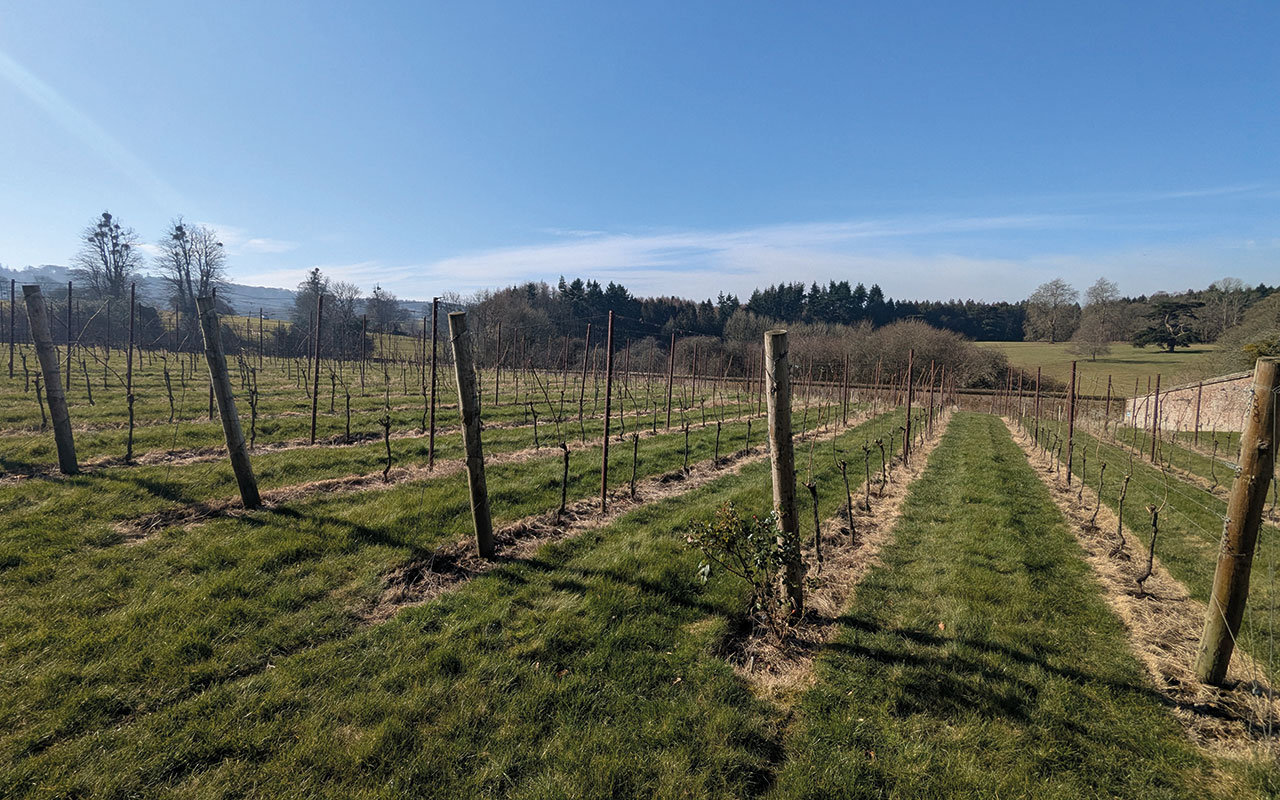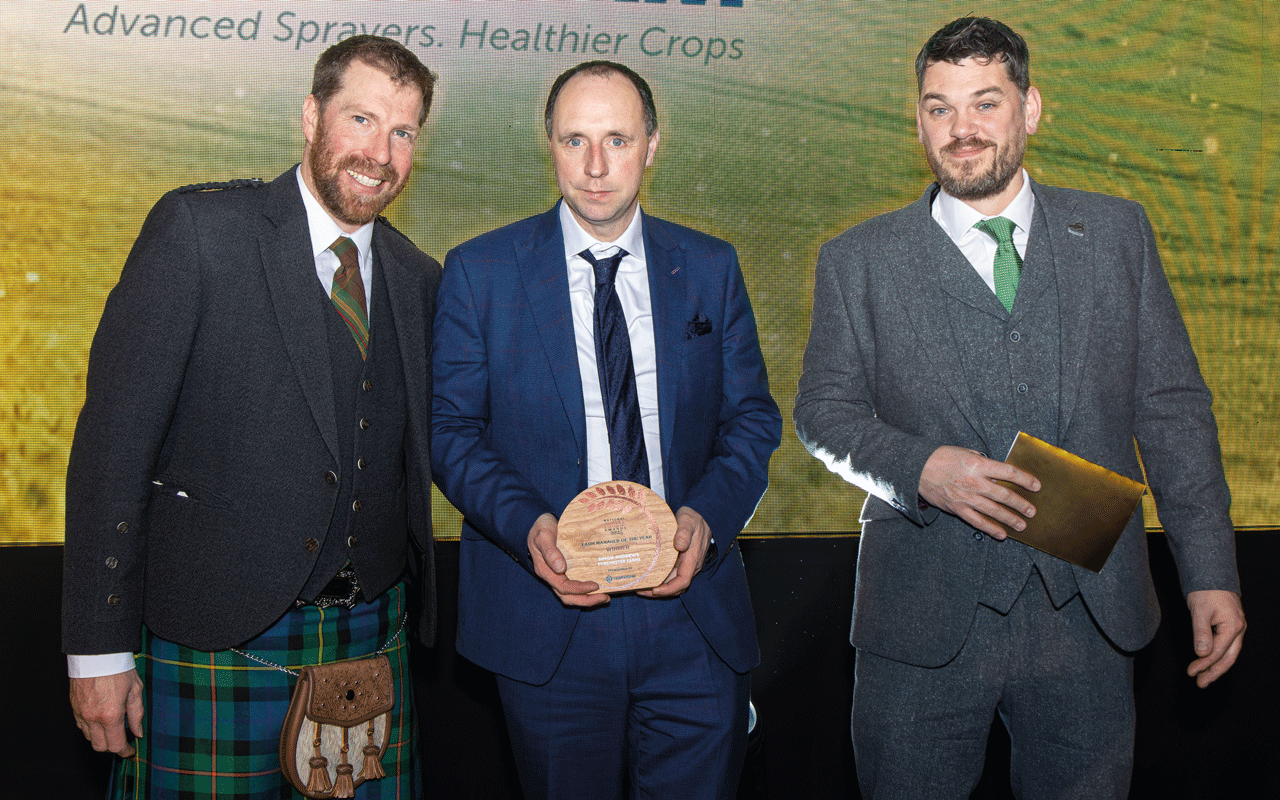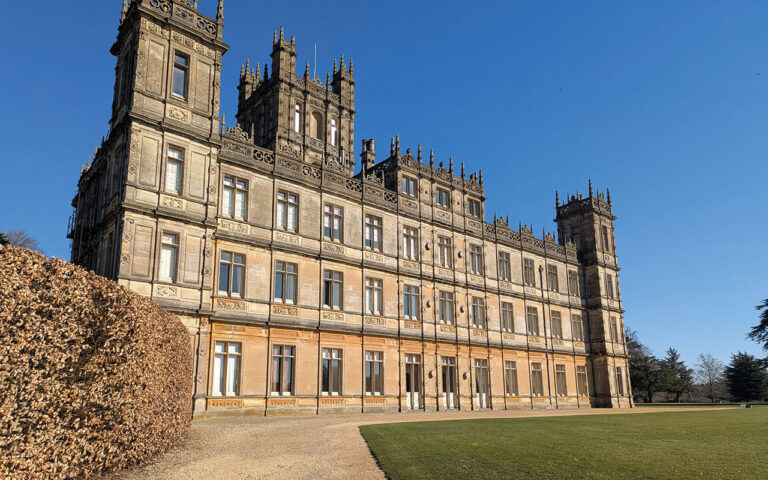2025 Farm Manager of the Year Simon Andrews might just oversee the most famous farm in the UK – although a certain car fanatic is putting up a fight in that regard.
Porchester Farms is part of the Highclere Estate, the filming location for the hugely successful period drama Downton Abbey.
Joining any going concern can bring challenges, and after spending seven years as assistant farm manager, Simon was promoted to farm manager in 2016. His time working with his predecessor had given him some ideas that would help secure the farm’s profitability and diversify income streams.
“We had a very labour-intensive sheep flock,” he explains. “We were lambing indoors, which was costing the business money for bedding and feed, so we pivoted, changing the breed and hiring a new shepherd to manage the flock.”
The breed was swapped to the hardier New Zealand Romney cross Lleyn. They graze the 400ha of permanent grassland year round, as well as cover crops of stubble turnips. The flock is lambed outdoors, breeding its own replacements.
This has led to a significant saving in labour, feed and veterinary expenses. Simon says despite the significant shift in practices, the output from the flock is comparable to the intensive system that used to be in place.
There have also been efforts to find new markets to boost the income from the sheep. Meat boxes are being trialled to provide a locally sourced, high-value return on the lambs, while wool is exported to the US to be used in high-value mattresses and furniture bearing the name Highclere Castle Beds and Furniture.
“The sheep are a key part of the overall system because a lot of grassland across the farm and the park is protected, meaning we cannot bring it into our rotation at any point,” Simon says. “Having the sheep to graze it means we are able to add value throughout.”
Maximising income
Working with Lord Carnarvon, Simon has looked to other specialist markets to ‘set the price, rather than having the market tell us’.
Having the Highclere name undoubtedly helps in this regard, but the efforts behind the scenes have come from standard practices on farm. A proportion of the oilseed rape is bottled to provide rapeseed oil in the estate shop, and wildflowers are periodically harvested to be sold as seeds.
The estate’s own brand of gin has also been infused with oats grown on the farm, reportedly giving it a unique flavour that has helped it gain a market both in the UK and abroad.
“A lot of our produce is sold in the estate shop,” Simon says. “Things like the wildflower seeds help us create an income from every part of the farm, and represent a low-cost opportunity for visitors to take a little part of the estate home with them.”
The largest area of diversification is the Highclere Horse Feed enterprise, which Simon took control of when he became farm manager. Hay, haylage and oats (both bagged and in bulk) are sold to some of the most celebrated stable yards in the country.
Oats are rolled and bagged on site, with the bulk sold under the Highclere name and a small percentage sold to other feed brands.
Hay and haylage are stacked in the yard by field so that the feed can be sold by grass variety and quality to suit customer preferences. To minimise damage to any wrapped bales, the haylage is taken off the field and wrapped in the yard with a McHale static wrapper, with eight layers of film applied.

Turning around the arable land
Around 800ha of the estate is farmed within the arable rotation, and Simon says that while this part of the business was washing its face every year, it was stuck in a rut when he took over.
“We weren’t spending money on new equipment, and we were relying on deep cultivations every year. By the time I became farm manager, we were struggling against plateaued yields and a severe blackgrass problem,” he says.
He quickly started the process of moving the farm to a reduced-tillage and direct-drilling regime, purchasing a second-hand Vaderstad Carrier fitted with wavy discs to keep the tillage depth to a minimum.
“We’ve got a lot of hilly land, with brashy, flint-heavy soils, so this not only helped to improve soil health, but also significantly cut down on tyre damage caused by flint,” he adds.
Investment in a used Vaderstad Seed Hawk enabled the farm to shift to direct drilling where conditions allowed, with a Rapid used when required.
These have since been traded in against an Amazone Condor with a 12m working width and fitted with narrow points. Simon says the drill can work in a range of conditions and regimes and has increased the output by up to four times without affecting fuel use.
Backed up by a Chafer 36m trailed sprayer, equipped with pulse width modulation thanks to a grant from Thames Water, and a 12m set of rolls, the arable rotation is built around winter wheat and winter oats, with beans, peas, spring barley for wholecropping and maize.
Forage crops have proven to be a high-value option, with three anaerobic digesters working, or due to start working, within 20 miles of the estate.
Premiums have also been achieved by growing for seed, with Tiffany peas previously grown on contract for Waitrose, while the Lynx spring beans from NPZ have been sown for the past
two years.
“Growing for seed is a great skill to have. It focuses the mind because that crop needs to be absolutely clean, and it has given us processes that we’ve extended across the rotation. It also helps spread the workload as these are taken off the field earlier.”
With this in mind, efforts have been made to adjust the rotation so that subsequent crops complement each other. Two-year ryegrass leys are used to clean up fields with a high weed burden, with the added bonus that the following crop can be direct-drilled into the leys. Traffic is managed by keeping the largest equipment to 12m where possible, fitting neatly in the 36m tramlines.
On less-productive ground, the estate is looking at more stewardship options, including growth stage 8 species-rich grassland as part of the Higher Tier stewardship scheme, while more temporary grass leys will be established to maintain ground cover year round and increase organic matter.
To further diversify the business, the estate has established a small vineyard, with the first wines due to be produced this year, and 24,000 trees have been planted as part of the England Woodland Creation Offer grant scheme.
Staff management
As farm manager, Simon is involved not only with the farm, but the various income streams across the whole estate, something he says he enjoys a lot. Working across multiple departments, he has encouraged staff members to put forward ideas to improve things and encourages them all to attend local shows at the estate’s expense to boost morale.
Working with the wider estate, he has implemented a more rigorous training programme for all staff. This includes health and safety training, which both Simon and Lord Carnarvon attended, as well as certifications for power tools, knapsack sprayers and other equipment for full-time and part-time workers.
Recognising both the day-today stresses that come with farming, as well as the external factors that might affect staff members, Simon has also been integral to the introduction of an external HR adviser at the estate, as well as detailed staff appraisals and access to over-the-phone, confidential counselling.
He doesn’t forget former employees, noting that he tries to catch up with retired staff, either meeting off-site or taking them on a tour of the grounds.
“Their lifetime of knowledge about the farm is hugely important,” he says.



